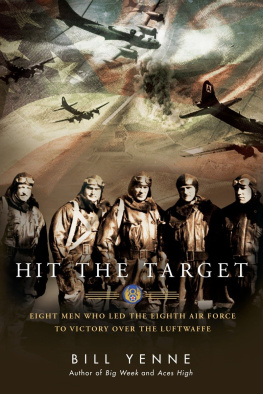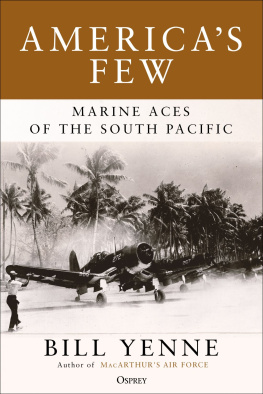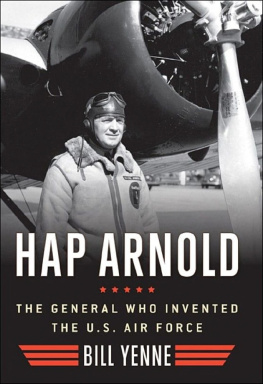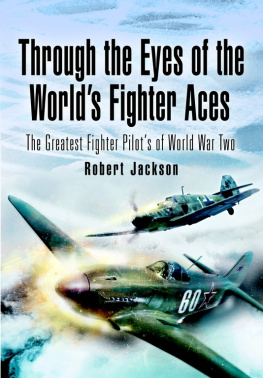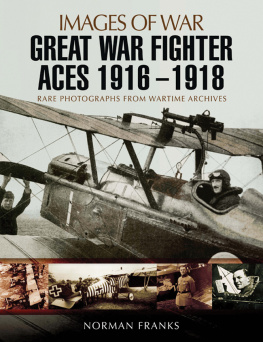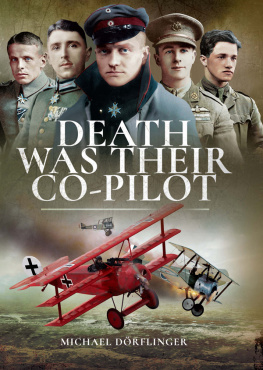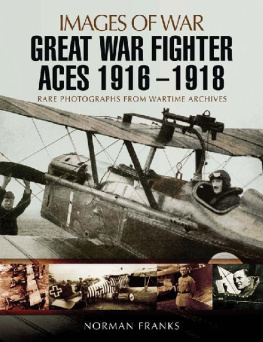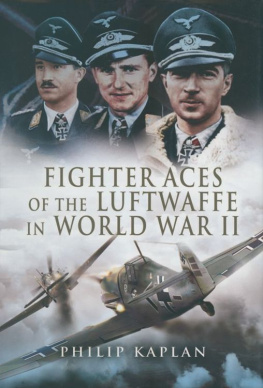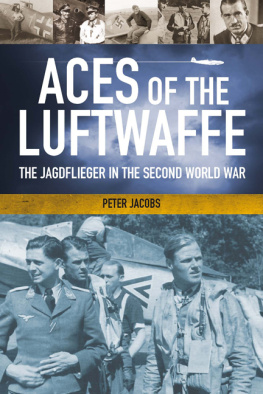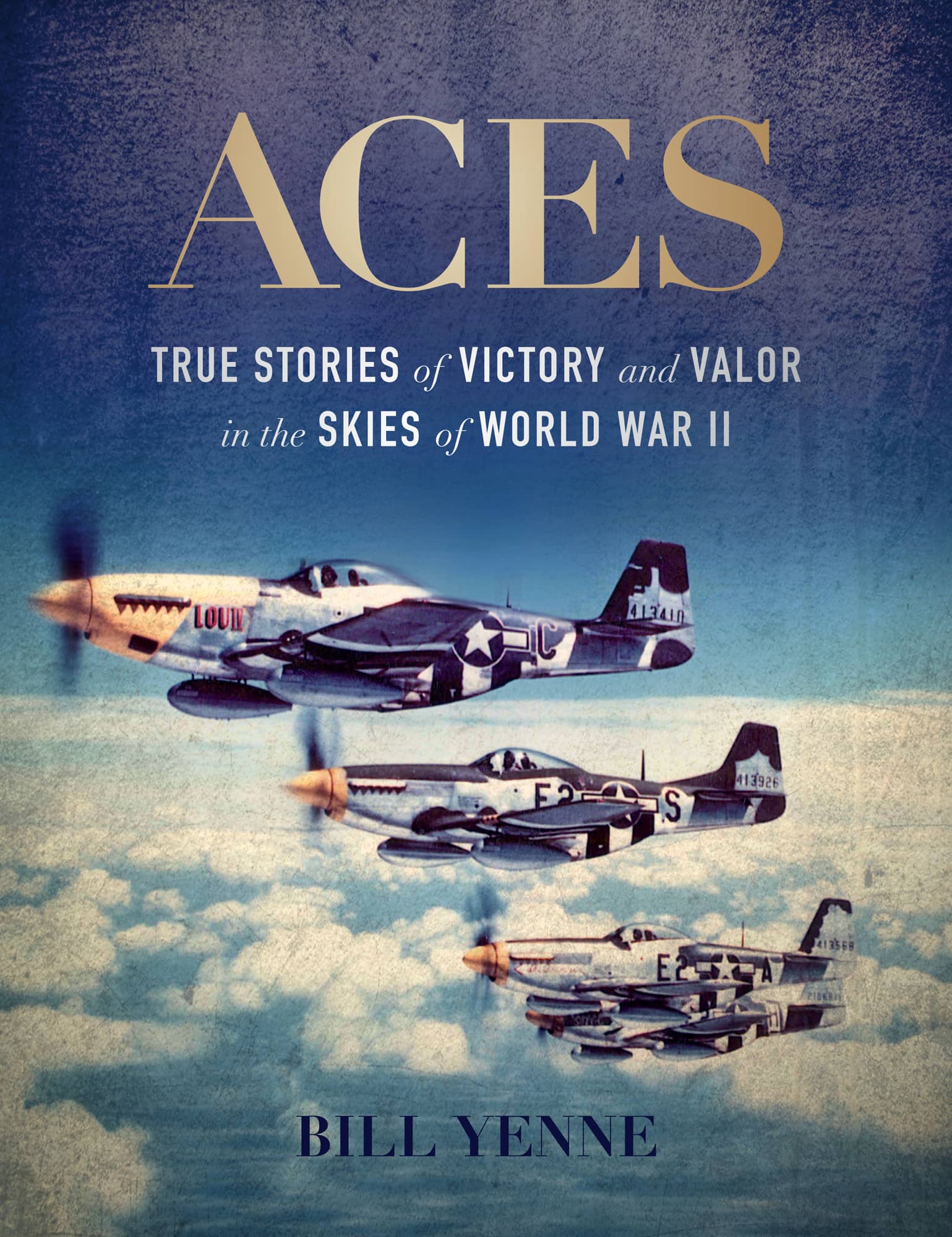Freiherr Rittmeister (Baron Captain) Manfred von Richthofen, known as the Red Baron because of his all-red Fokker DR.1 triplane, was the top-scoring air ace of World War I. Arguably the most famous air ace of all time, he had scored 80 aerial victories by the time he was killed in action on April 21, 1918. Authors Collection
Supermarine Spitfire Mk. IX fighters of the Royal Air Force No. 611 Squadron in flight over southern England. Authors Collection
W HAT IS AN ACE? Technically it means a pilot of a fighter aircraft who has shot down, or destroyed in the air, a total of five enemy aircraft. An ace is defined as a fighter pilot who has achieved five aerial victories. An ace can also be described as a fighter pilot who has dueled to the death with five other fighter pilots, and has survived.
Similar to the knights of old, however, the knight of the air does not necessarily seek to literally kill his opponent, but rather to destroy his aircraft. If he dies in the process, he dies heroically, but if he survives, the code of the ace abhors the fighter pilot who would shoot at a man hanging helplessly in a parachute. While this did occur, it is, and always has been, roundly condemned by fighter pilots everywhere. It was much more common that the victorious pilot flew past his victim with a salute or a wave.
Other examples of the level of chivalry among aces occurred on two occasions in 1941 and 1942, when the British aces Douglas Bader and Robert Tuck were shot down over France. In both cases, the German ace Adolf Galland, who was also a Luftwaffe group commander, invited the men to dine with him at his officers mess. In the air, Galland would have considered them enemies. Elsewhere, they were colleagues. After the war, Galland and Bader were reportedly close friends. For many years after the war, numerous surviving aces from opposing sides met and mingled at reunions and other events, as though they were all part of a band of brothers.
The term was coined in 1915 when French newspapers described Adolphe Pgoud as lAs (the Ace) after he became the first pilot to down five German aircraft. He was killed in action in August 1915. The term is also widely associated with French daredevil aeronaut turned military pilot, Roland Garros. He was also prominent as an ace in the French press in 1915, but it seems that he only scored four aerial victories before he was captured in April 1915.
Aces were popular in World War I because of the glamour involved. They fought high above the filth of the terrible trenches and they fought one-on-one like the knights of old. They inspired just about the only chivalrous tales to come out of that terrible war.
French aviator Adolphe Pgoud was probably the first man to down five enemy aircraft, and is the founding member of this lineage of heroes. He was first to be described in the newspapers as lAs (the Ace). He downed six between February 5 and August 31, 1915, when he himself was shot down and killed. Authors Collection
In World War II, aces were equally colorful, though aerial combat had become more sophisticated technologically, more routine and much more deadly. Far more individuals were involved in aerial combat and far more became aces. Also in World War II, the recording of aerial victory data became an official part of air force record keeping. It had been so with the German and the French in World War I, but it was much more informal with the air services of other countries.
While the maintaining of data relative to aerial victories was more formalized in World War II, there were still differences and variations from one air force to another. An ace was universally accepted as someone who has scored five aerial victories, but each of the air forces involved in World War II had a different method for calculating exactly what constituted an aerial victory.
In World War II, as in World War I, Germany had a strict one pilot, one victory rule. One pilot was given a victory credit for each enemy aircraft shot down. If he was assisted by another pilot, the other pilot got no credit to his overall score for the assist. If two pilots shared equally, then the credit went to the staffel (squadron) and to the overall tally of neither pilot. To claim a victory in the German Luftwaffe, the claimant had to have a witnesspreferably twoand he had to formally fill out a comprehensive victory report which was followed by a combat report. For this reason, German victory totals in World War II are considered very accurate, and in cases where there might have been a discrepancy, the totals are definitely on the low side. The Germans even went so far as to recognize only pilots with 10 or more victories. Such pilots were referred to as an experte.
The Americans are considered to have been the most precise in their accounting, because, through most of World War II, American fighters were equipped with gun cameras, and no scores were recognized as confirmed without gun camera film footage as proof. American victory totals are often qualified by the mention of probables or damaged enemy aircraft, which are those which were probably shot down, but which cannot be confirmed. These are often mentioned parenthetically, but are not included in official victory totals. In World War I, Americans had assigned whole numbers to several pilots participating in downing a single enemy, but this practice was not followed in World War II. Whereas the German practice was to simply not award any scores for assists, the Americans developed a system during World War II for giving appropriate credit for assists by calling them shared victories.


